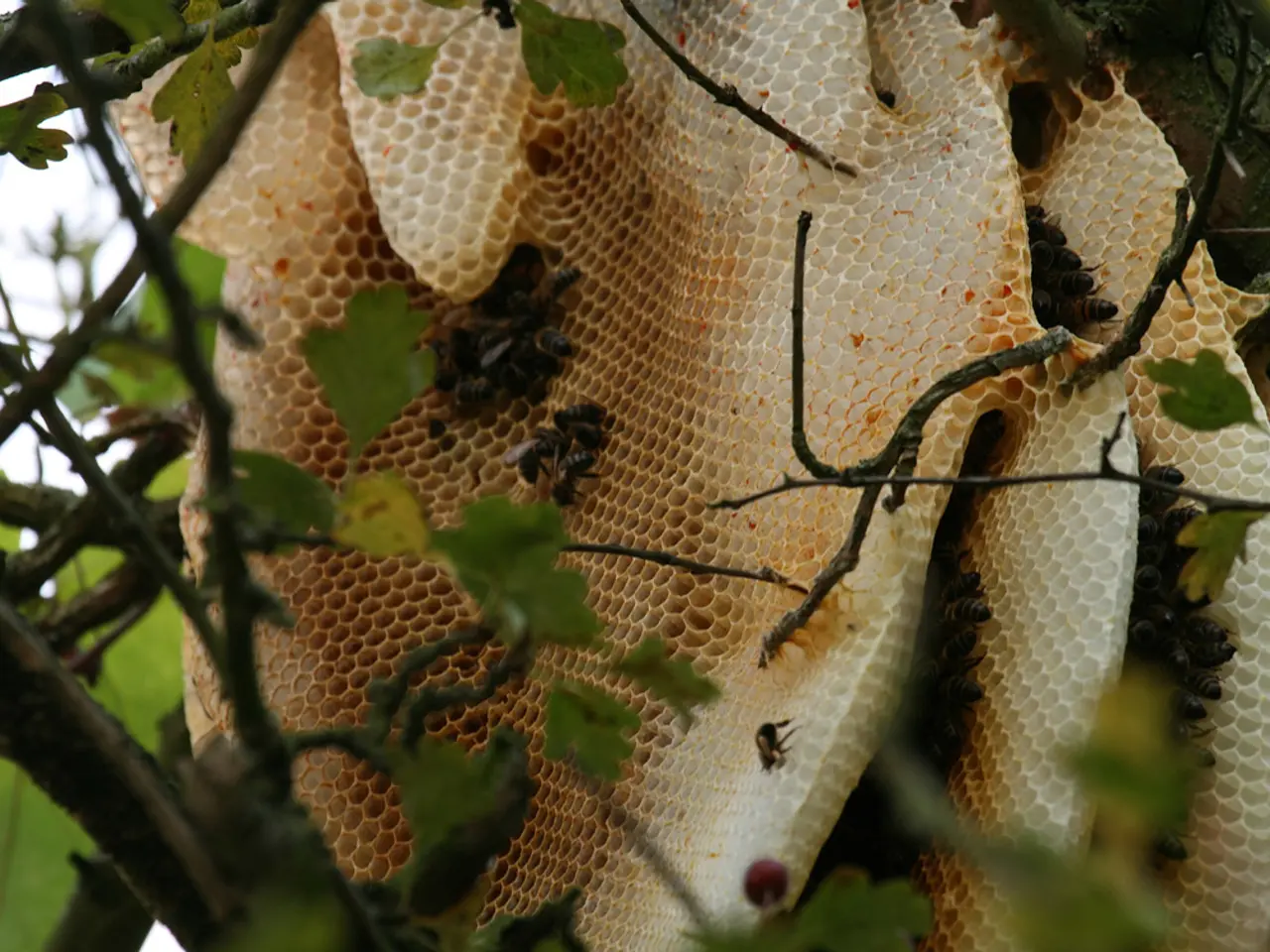Guide for Assisting Native Bees: Personal Actions to Boost Pollinator Population
In the vibrant landscapes of Ohio, home to approximately 500 native bee species, gardeners play a crucial role in bee conservation. By adapting their gardening practices and providing suitable habitats, they can help protect and attract these essential pollinators.
Bees, known for their unique ability to gather and transport pollen, are facing various threats such as lack of forage, pests, pathogens, pesticides, invasive plants, climate change, and lack of suitable nesting sites. However, by creating a diverse, bee-friendly habitat, gardeners can make a significant difference.
Planting a Variety of Native, Nectar-Rich Flowers
One of the key actions is to plant a variety of native, nectar-rich flowers that bloom throughout the growing season. Examples include bee balm (Monarda), coneflowers (Echinacea), black-eyed Susans (Rudbeckia), asters, goldenrods, and other native species suited to your region.
Providing Continuous Blooms
To ensure bees have a consistent food source, it's essential to include early-, mid-, and late-season flowering plants. This way, bees can find food all season long.
Selecting Plants with Different Features
Selecting plants with different flower shapes, colors, and heights and planting them in clumps can attract a diverse range of native bee species and other pollinators.
Incorporating Native Trees and Shrubs
Trees and shrubs like maples, oaks, crabapple, linden, and sumac provide essential pollen and nectar in addition to flowers.
Creating Safe Habitats for Nesting
Leaving parts of the garden undisturbed with some full-length plant stems left over winter, or by adding native plants with hollow or pithy stems (e.g., milkweed, rattlesnake master) to provide nesting sites for stem-nesting bees, can create safe habitats for these vital creatures.
Providing Water Sources
Bees need water too! Providing water sources like shallow dishes with pebbles can allow bees to drink safely without drowning.
Maintaining the Garden Organically
Avoid synthetic fertilizers and pesticides that can harm bees. Instead, use compost and gentle pest control methods to protect pollinators.
Partnering with Local Beekeepers or Community Groups
Partnering with local beekeepers or community groups can provide valuable insights into best practices for attracting and protecting native bees.
By following these steps, gardeners can create a welcoming environment that supports native bee populations, which are essential pollinators for many wild plants and crops. For more information, resources such as The Pollinator Partnership, The Ohio State University Bee Lab, and Xerces Society for Invertebrate Conservation can provide valuable insights into native bees and their conservation.
- Gardeners, in their role of bee conservation, can help protect native bee species by adopting pest management strategies that are organic, avoiding synthetic fertilizers and pesticides harmful to pollinators.
- To create a diverse, bee-friendly habitat, gardeners can plant a variety of native, nectar-rich flowers that bloom throughout the growing season, such as coneflowers, black-eyed Susans, asters, and goldenrods.
- By leaving parts of the garden undisturbed and planting native plants with hollow or pithy stems, like milkweed and rattlesnake master, gardeners can provide safe habitats for nesting bees.
- Incorporating native trees and shrubs like maples, oaks, crabapple, linden, and sumac can benefit bees by offering essential pollen and nectar sources.
- To encourage a diverse range of native bee species and other pollinators, gardeners can select plants with different flower shapes, colors, and heights and arrange them in clumps within their home-and-garden or lifestyle spaces.




